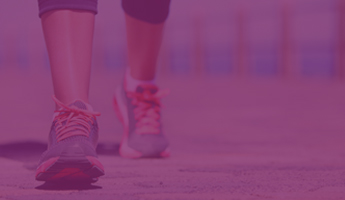Drink more water, drink less water, hold your wee, go just in case? It’s a confusing world navigating bladder habits when you leak. Here’s what you need to know.
What do you need to know about bladder function?
The bladder is a pelvic organ that sits behind your pubic bone and in front of your uterus. Its main job is to store urine. Urine exits the bladder through a hose like structure called the urethra. It’s important to understand just what the bladder is supposed to do, so you can better identify when things aren’t right.
As the bladder is filling with urine, the bladder walls stretch and messages from these walls are sent to your brain to give you feedback on the degree of “fullness”. An average healthy bladder can store around 400-600ml of urine, and most people will notice an urge to wee around 200-300ml. During the filling phase, your urethra and pelvic floor muscles help to keep the bladder closed. Once you are on the toilet and ready to wee, your urethra and pelvic floor muscles relax, and the bladder begins to squeeze to let urine out. This is, for the most part, a completely automatic function.
What are some signs of a healthy bladder?
Empty approximately 4-8 times a day
Possibly wake you up at night, but only once (up to 2 times if you are over 65)
Gradually give you a sensation of fullness over time
Give you enough time to find a toilet
Not leak urine
Empty completely each time you do a wee
Top tips for maintaining a healthy bladder
Drink water:
Ideally, you would be consuming enough fluid to keep your urine OUTPUT (i.e., how much wee comes out over a 24-hour period) somewhere between 1.3 and 2.5 Litres. You can check the colour of your urine to gauge this, it should be pale yellow or clear. But know that if you take certain supplements then this will impact urine colour significantly. Both drinking too little and drinking too much water can make leaking worse.Avoid stimulants that make your bladder “angry”:
These aren’t the same for everyone but in many cases caffeine (don’t forget most teas are caffeinated), fizzy drink and alcohol can impact bladder function and create a sense of bladder urgency. If you are bothered by your bladder symptoms and know you drink a lot of tea and coffee, you could try cutting it out for a two-week period and notice if there are any changes to your bladder function.Don’t wee “just in case”:
Like we mentioned above, your bladder walls stretch over time as it fills with urine and it’s this stretch that sends messages to the brain about your need to wee. Forcing urine out before this point (on a regular basis) can impact its ability to store urine effectively over time.Sit in a relaxed position:
There is no need to “force” your wee out. Bearing down or actively trying to squeeze urine out can potentially impact the bladders’ ability to empty completely. Your pelvic floor muscles need to relax in order to let urine out.Avoiding holding for long periods of time:
You should be aiming to wee at least every 3-4 hours. Consistently forcing your bladder to hold large amounts of urine can impact its ability to effectively store and empty urine overtime.Wee after having sex:
This can reduce the introduction of bacteria into the urethra and may play a role in preventing urinary tract infections.Wipe from front to back:
Another way to reduce the introduction of bacteria into the urethra and play a role in preventing urinary tract infections.Take your time:
Give yourself enough time to completely empty your bladder. Not so easy when you have little ones at your toes but do your best!Know how to squeeze and relax your pelvic floor and practice pelvic floor exercises.
You can find out more here in our 12 weeks to stronger pelvic floor program.
This content is general in nature and not designed to substitute professional medical advice, diagnosis, or treatment.
Written for Poise by Caitlin Dunsford. Caitlin is a practicing Physiotherapist, with special interest and further training in Women's Health and Continence.







